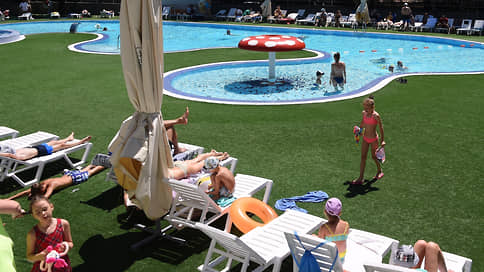Sanatoriums count on women – Newspaper Kommersant No. 180 (7381) of 09/29/2022
[ad_1]

According to the results of this year, the number of guests in Russian health resorts for the first time since the beginning of the pandemic may exceed the figure for 2019, reaching almost 7 million people. The segment will bypass the general decline in interest in travel against the backdrop of partial mobilization due to the higher average age of guests and the predominance of women, the profile association calculates. But other market participants are skeptical about the forecast: being in a state of “close to hysteria”, consumers are not ready to plan a vacation.
The total number of guests of Russian health resorts this year may reach 6.9 million people, an increase of 15.2% year-on-year. This figure may be the highest since 2015 and for the first time since the start of the pandemic exceed the level of 2019 (6.7 million people) by 3%. Such a forecast based on the current results of the industry is contained in the rating of investment attractiveness of Russian health resorts, compiled by the Association of Health Tourism and Corporate Health (AOT). “Summer was active, and autumn is supported by the cashback program,” explains Mikhail Danilov, medical director of AOT.
Deputy Chairman of the Council of the Union of Tourism and Hospitality Roman Yeremyan is sure that financial results are more indicative in assessing the work of health resorts. According to AOT estimates, the total income of sanatorium and resort organizations in January-June reached 67.55 billion rubles, an increase of 11% year-on-year. The growth compared to 2019 was 24%.
The average cost of staying in Russian health resorts also increased by 8% over the year, to 2.51 thousand rubles. in a day. AOT associates the dynamics with an increase in the cost of consumables, products and tariffs for housing and communal services, assuming that it will continue until the end of the year. Elena Lysenkova, deputy head of Rostourism, calls sanatorium and resort rest one of the most promising areas for the development of domestic tourism, pointing to the popularity of health trips.
But in the regions the dynamics is uneven. In the first half of the year, the performance of health resorts, according to AOT estimates, increased relative to the level of 2019 in about half of the constituent entities of the Russian Federation. A negative trend can be traced in Crimea, where, according to the association’s estimates, 149,000 guests stayed in sanatoriums in January-June, which is 33% lower than last year and 2019. Mr. Danilov connects this with the cancellation of flights to Crimea due to a special operation in Ukraine. In the Moscow region for the first half of the year the number of guests of health resorts increased by 34%, up to 162 thousand people. In Tatarstan, the increase was 32%, to 89 thousand. AOT notes a fairly pronounced positive trend in the Krasnodar Territory, where the flow to health resorts increased by 22% over the year, to 700 thousand guests.
The sanatorium and resort market during the pandemic showed a more pronounced decline than hotel services: the number of overnight stays in 2020 decreased by 40% and 22.4%, respectively, the AOT notes. But in the current conditions, market participants are counting on its higher stability. Mikhail Danilov assumes that the pressure of the negative information background on the segment is still weak: there is no significant decrease in demand and mass cancellations of bookings. “The main audience of health resorts so far is made up of people with chronic diseases, more often over 50 years old, women predominate, this part of tourists is now the most stable,” notes Mr. Danilov.
But Roman Yeremyan is confident that the decline will eventually affect all segments of the tourism market. “Negative sentiment has been growing since March and already has an accumulated effect, the state of consumers is close to hysteria – they refuse all additional expenses, switching to a savings model, spending is now growing only on air tickets, food and military equipment,” he says. A similar position is shared by the general director of the Dolphin tour operator Sergey Romashkin, noting that tourists are generally in a bad state and are not ready to plan a vacation. “Among the guests of sanatoriums, there are indeed three to four times more women than men, but the situation in which someone in the family goes to serve, and someone plans treatment or vacation in a health resort seems doubtful,” he sums up.
[ad_2]
Source link





